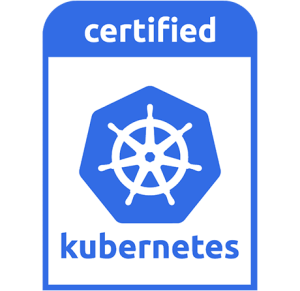Blogs
Preparation
- CentOS 7 64 Bit mit 4GB RAM
- Unblocking the ports for Elastic in the firewall:
1. sudo firewall-cmd --zone=public --add-port=9200/tcp --permanent # Elasticsearch HTTP
2. sudo firewall-cmd --zone=public --add-port=9300/tcp --permanent # Elasticsearch TCP transport
3. sudo firewall-cmd --reload
Key
- Meaning of colors in this guide:
- elasticsearch.repo → Text written in red is a free-form naming convention, whereas text written in black is not free-form.
- code examples appear in gray boxes
- an http link with curl command or import command is to be executed in the VM/Moba. Without curl in any web browser.
- this manual has CentOS7 preinstalled. The directories and commands may vary from OS to OS. In the case with the directory/command is shown as blue text, otherwise as orange text.
If not working on CentOS7, these links will help:
https://www.elastic.co/guide/en/logstash/7.6/dir-layout.html
https://www.elastic.co/guide/en/logstash/7.6/running-logstash.html
Step 1 - Install Java/OpenJDK
Java version 8 or 11 is required for the installation:
yum install java-1.8.0-openjdk-devel -y
Step 2 - Check if installed correctly
java -version
openjdk version "1.8.0_252"
OpenJDK Runtime Environment (build 1.8.0_252-b09)
OpenJDK 64-Bit Server VM (build 25.252-b09, mixed mode)
Step 3 - Creating the Elastic Repo
First a file named elasticsearch.repo is created in the directory /etc/yum.repos.d/.
There the following is copied in:
[elasticsearch]
name=Elasticsearch repository for 7.x packages
baseurl=https://artifacts.elastic.co/packages/7.x/yum
gpgcheck=1
gpgkey=https://artifacts.elastic.co/GPG-KEY-elasticsearch
enabled=1
autorefresh=1
type=rpm-mdAfter that the following command is executed:
yum install --enablerepo=elasticsearch elasticsearch -y
Step 4 - Starting Elasticsearch with systemd
For it to start automatically, the following commands must be executed:
sudo /bin/systemctl daemon-reload
sudo /bin/systemctl enable elasticsearch.service
Step 5 - Configure ElasticStak (Optional)
After that, Elasticsearch can be started or stopped with the following commands:
sudo systemctl start elasticsearch.service #starts
sudo systemctl stop elasticsearch.service #stop
Step 6 - Verify that Elasticsearch has been started.
Elastic does not give any feedback if it has been started. Only if there are files in a subfolder, it was installed and started correctly.
ls /var/log/elasticsearch/
Alternatively you can look in journalctl:
journalctl --unit elasticsearch
May 06 04:14:36 localhost.localdomain systemd[1]: Started Elasticsearch.
Step 7 - Check if everything has worked out
Sending an HTTP request to PORT 9200 to the localhorst, you can verify that everything works
curl -X GET "localhost:9200/"
{
"name" : "localhost.localdomain",
"cluster_name" : "elasticsearch",
"cluster_uuid" : "2CQpHaNnTs6mW3ntb65Z7A",
"version" : {
"number" : "7.6.2",
"build_flavor" : "default",
"build_type" : "rpm",
"build_hash" : "ef48eb35cf30adf4db14086e8aabd07ef6fb113f",
"build_date" : "2020-03-26T06:34:37.794943Z",
"build_snapshot" : false,
"lucene_version" : "8.4.0",
"minimum_wire_compatibility_version" : "6.8.0",
"minimum_index_compatibility_version" : "6.0.0-beta1"
},
"tagline" : "You Know, for Search"
}
Step 8 - Assign a host IP to Elastic
By default, Elastic has set localhost as the host IP. This should be changed in the /etc/elasticsearch/elasticsearch.yml directory:
# ---------------------------------- Network -----------------------------------
#
# Set the bind address to a specific IP (IPv4 or IPv6):
#
network.host: IP der VM, auf der Elastic installiert wurde
#
# Set a custom port for HTTP:
#
http.port: 9200
#
# For more information, consult the network module documentation.
#
Step 9 - Interesting commands
Create index logs:
curl -X PUT "192.168.20.100:9200/logs" -H 'Content-Type: application/json' -d'{ "settings" : { "index" : { } }}'
Delete index logs:
curl -XDELETE "192.168.20.100:9200/logs"
For security reasons
Default Elasticsearch yaml, which can be found in the /etc/elasticsearch/elasticsearch.yml folder:
# ======================== Elasticsearch Configuration =========================
#
# NOTE: Elasticsearch comes with reasonable defaults for most settings.
# Before you set out to tweak and tune the configuration, make sure you
# understand what are you trying to accomplish and the consequences.
#
# The primary way of configuring a node is via this file. This template lists
# the most important settings you may want to configure for a production cluster.
#
# Please consult the documentation for further information on configuration options:
# https://www.elastic.co/guide/en/elasticsearch/reference/index.html
#
# ---------------------------------- Cluster -----------------------------------
#
# Use a descriptive name for your cluster:
#
#cluster.name: my-application
#
# ------------------------------------ Node ------------------------------------
#
# Use a descriptive name for the node:
#
#node.name: node-1
#
# Add custom attributes to the node:
#
#node.attr.rack: r1
#
# ----------------------------------- Paths ------------------------------------
#
# Path to directory where to store the data (separate multiple locations by comma):
#
path.data: /var/lib/elasticsearch
#
# Path to log files:
#
path.logs: /var/log/elasticsearch
#
# ----------------------------------- Memory -----------------------------------
#
# Lock the memory on startup:
#
#bootstrap.memory_lock: true
#
# Make sure that the heap size is set to about half the memory available
# on the system and that the owner of the process is allowed to use this
# limit.
#
# Elasticsearch performs poorly when the system is swapping the memory.
#
# ---------------------------------- Network -----------------------------------
#
# Set the bind address to a specific IP (IPv4 or IPv6):
#
#network.host: 192.168.0.1
#
# Set a custom port for HTTP:
#
#http.port: 9200
#
# For more information, consult the network module documentation.
#
# --------------------------------- Discovery ----------------------------------
#
# Pass an initial list of hosts to perform discovery when new node is started:
# The default list of hosts is ["127.0.0.1", "[::1]"]
#
#discovery.zen.ping.unicast.hosts: ["host1", "host2"]
#
# Prevent the "split brain" by configuring the majority of nodes (total number of master-eligible nodes / 2 + 1):
#
#discovery.zen.minimum_master_nodes:
#
# For more information, consult the zen discovery module documentation.
#
# ---------------------------------- Gateway -----------------------------------
#
# Block initial recovery after a full cluster restart until N nodes are started:
#
#gateway.recover_after_nodes: 3
#
# For more information, consult the gateway module documentation.
#
# ---------------------------------- Various -----------------------------------
#
# Require explicit names when deleting indices:
#
#action.destructive_requires_name: true
Check out our latest blogpost
Kubernetes in Focus: An Outlook on Future Growth Areas
Any Questions?
Please feel free to contact us for any question that is not answered yet.
We are looking forward to get in contact with you!
KubeOps GmbH
Hinter Stöck 17
72406 Bisingen
Germany
-
Telefon:
+49 7433 93724 90
-
Mail:
This email address is being protected from spambots. You need JavaScript enabled to view it.





